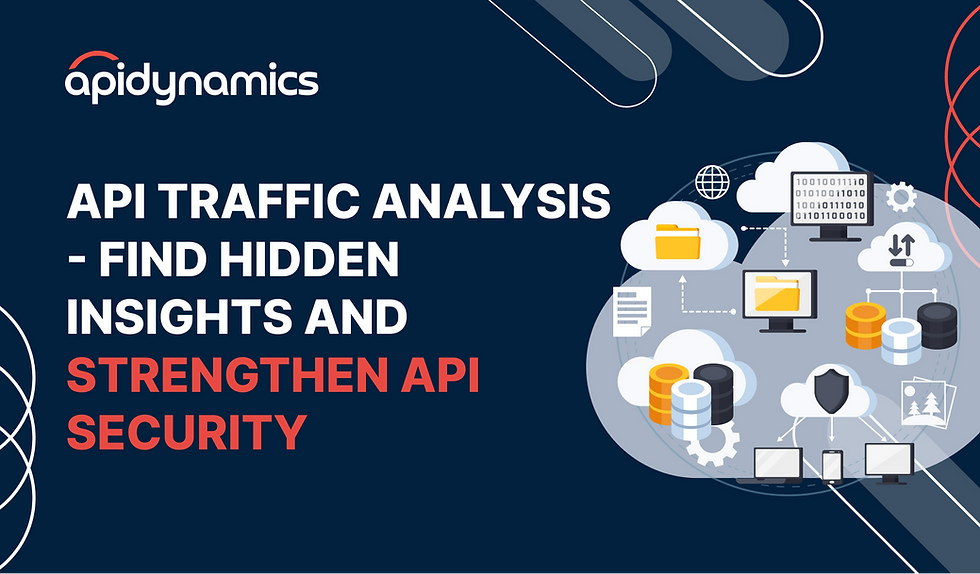🔐 From Agent to API: Why Adaptive MFA Must Power Autonomous AI
- APIDynamics
- Aug 1
- 3 min read

By Tippu Gagguturu
We’re entering a new era in software:Not just artificial intelligence — but autonomous intelligence.
Gone are the days when AI systems simply answered questions or summarized text. Today, we’re seeing the rise of Agentic AI: intelligent agents that plan, reason, select tools, and act.
And how do they act?
Every action is an API call.
These agents don’t operate in isolation. They're orchestrated by Multi-Agent Control and Planning (MCP) servers, which coordinate tasks, manage long-term state, and decide which API endpoints to invoke — and when.
Together, this forms a powerful (but vulnerable) architecture:
⚙️ The Autonomous Execution Stack
Layer | Role |
MCP | Thinks, plans, orchestrates |
Agents | Execute specific capabilities |
APIs | Perform actions on systems |
It’s brilliant. It’s scalable. But it’s also exploitable.
🚨 The Risk: Intelligence Is Not Immunity
The assumption is that intelligent agents, because they're internal or sandboxed, are inherently safe. But that’s a dangerous belief.
These agents can:
Update CRMs
Trigger financial transactions
Submit procurement requests
Interact with legal and infrastructure systems
And they do all of this via APIs — APIs that were never designed to question why a request is being made.
The traditional access controls we rely on — OAuth scopes, static bearer tokens, IP whitelisting — trust the system itself. But what happens when the system is… confused, compromised, or cloned?
🔐 The Solution: Adaptive MFA for Machines
It’s time to rethink trust at the API level.
At APIDynamics, we asked:“If humans need MFA to access sensitive data, why don’t machines?”
Here’s how we solve it:
1. Real-Time Risk Scoring
Every agent-triggered API call is scored based on:
Behavior anomalies
Time of day
Source IP / location
Call frequency
API path sensitivity
2. Adaptive MFA for Machines
When risk exceeds a threshold, we don’t blindly accept the call.We issue machine challenges — such as TOTP-based step-ups — using dynamic, policy-driven logic.
Yes, even machine-to-machine calls now have to prove their trustworthiness.
3. Context-Aware Enforcement
A valid token isn't enough.We bind token usage to:
Context (location, subnet, agent behavior)
Call pattern (sequential anomalies)
Time and frequency windows
4. MCP Flow Mapping
We profile how MCPs interact with agents and downstream APIs.When orchestration behavior deviates — new toolchains, new API paths, sudden surges — we flag or block.
🧠 Why This Matters Now
The adoption curve for Agentic AI is exploding.But most companies are running ahead of their security teams.
The real-world threats are mounting:
Fine-tuned agents with unintended behaviors
Prompt injection and command confusion
Token misuse between services
Compromised orchestration layers (MCPs)
The truth is:
APIs don’t know who you are. They just see a call.
We need more than monitoring. We need defense.
]
🚀 From Agent to API: Trust, Reinvented
Here’s the new truth:
The agent is your user
The MCP is your superuser
The API is your execution engine
So ask yourself — if this were a human user accessing a core system, would you let them through with just a bearer token?
Probably not.
It’s time we give our machine interactions the same level of scrutiny.
🛡️ This Is What APIDynamics Was Built For
At APIDynamics, we believe autonomous systems require autonomous security.
We defend:
Every agent-triggered call
Every orchestration workflow
Every API endpoint at the edge
We bring Zero Trust down to the API call level — with real-time, behavior-aware, adaptive protection.
Because the future of AI is fast. But it shouldn’t be blind.
🔗 Learn how APIDynamics integrates with your agentic AI frameworks AND APIS. https://www.apidynamics.com




Comments